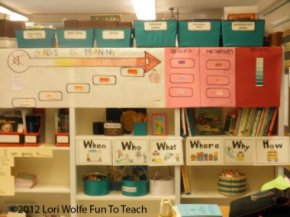What is semantics gradients?
 By Lori Wolfe, Monthly Columnist
By Lori Wolfe, Monthly Columnist
As elementary teachers we are always looking for and finding strategies to use with our students that broaden and deepen their understanding when reading. We know that when students, especially second language learners, can distinguish between the shades of meanings of related words, then they can be more precise and imaginative in their writing. Shades of meaning are the small differences among words that are related to a specific topic or idea. The Common Core Language Standard L.5 requires students to distinguish shades of meaning among words beginning in Kindergarten and continuing through elementary grades.
If you don’t know about semantic gradients, let me introduce you! Semantic gradients are powerful tools to teach elementary students the differences between related words and increase their vocabulary. This method of improving reading comprehension works with both English Language Learners and native English speakers and offers classroom teachers a vehicle to reach the needs of all of students. This type of gradient helps students distinguish between the subtle nuances of meaning of related words and broadens their understanding of connected words. Furthermore, gradients show all students how to use vocabulary precisely when expressing themselves in speaking and writing.
What is a Semantic Gradient?
 If you would like a free copy of the black line of the gradient I use in my classroom, click here!
If you would like a free copy of the black line of the gradient I use in my classroom, click here!
Semantic gradients are lists of related words that have similar meanings placed on a continuum moving from one word to its opposite. It is a continuum that order related words by degree.
These gradients use anchor words (words and their opposites) at each end of the gradient. The words used in between gradually shift in meaning.
For example, freezing and sweltering would be the anchor words for a semantic gradient of temperature words that included the following: freezing, cold, cool, warm, hot, roasting, and sweltering.
How do you use a Semantic Gradient?
- Identify your 2 anchor words by choosing a word and finding its opposite.
- Find synonyms for each of those words and order them to create your word list.
- Students then order the words to create a gradient...
You might also like











